Affiliate links on Android Authority may earn us a commission. Learn more.
Xiaomi Mi 4 review - a very solid offering
Published onAugust 30, 2014
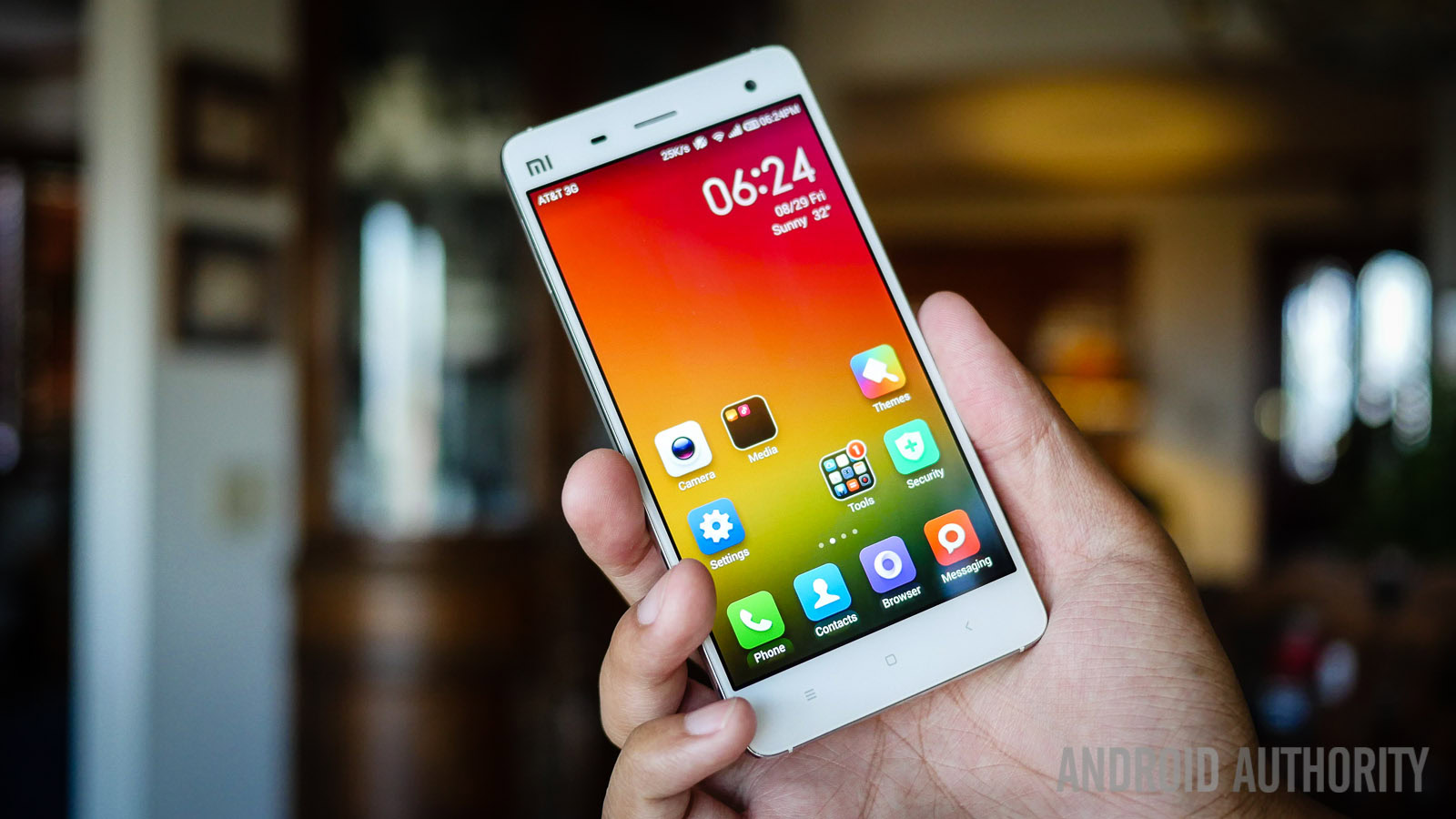
Xiaomi is one of the leading OEMs in its home country, but the Chinese company has been pushing for a wider global audience. After finding success in emerging markets in Asia, Xiaomi is now hoping to continue that run with its latest flagship offering, which, at least on paper, should give the current crop of high-end flagships a run for their money. Whether it manages to do so, and more, is what we find out as we take an in-depth look at the Xiaomi Mi 4!
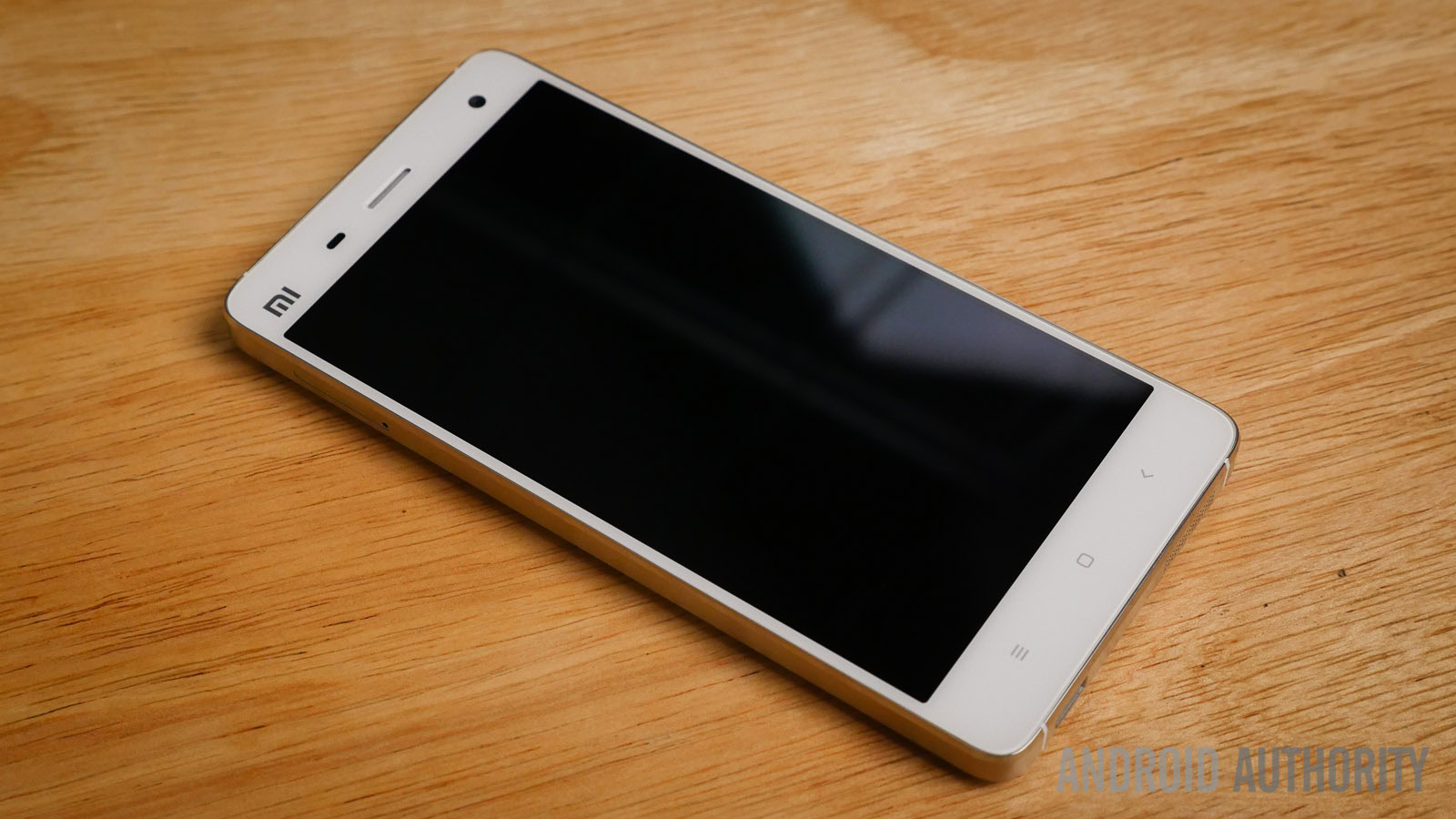
The Xiaomi Mi 4 joins a growing list of smartphones, particularly out of the Chinese market, that are starting to feature some metal in their build. While it’s not the full unibody metal construction that you’d get with the HTC One (M8), the metal skeleton of the Mi 4 contributes not only to the sturdiness of the phone, but also to its good looks. The buttons on the right side are also metallic, with the placement of the power button below the volume rocker making it very to reach. Up top is where you’ll find the headphone jack, with the microUSB charging port and a speaker placed on the bottom.
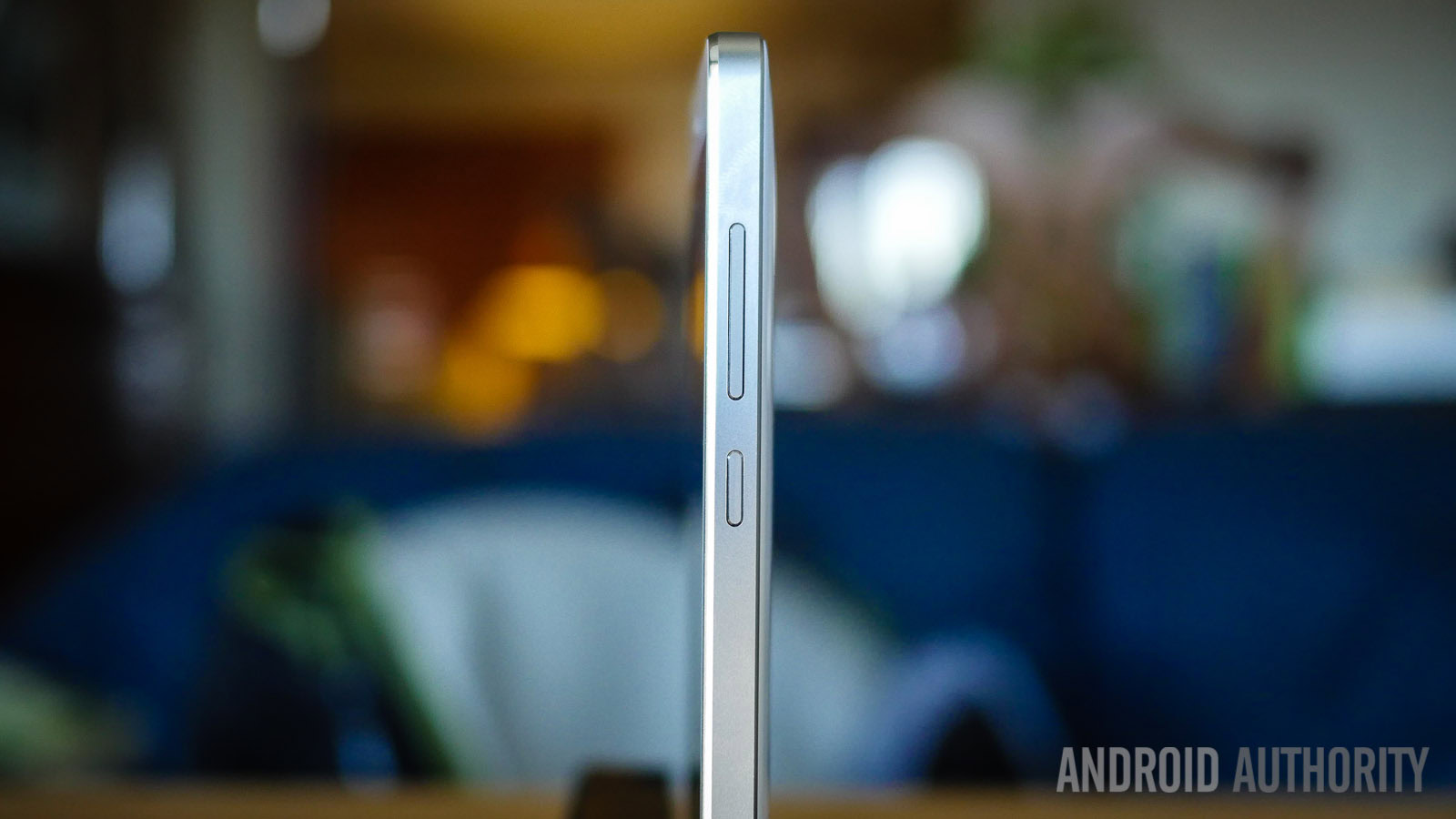
The rest of the build material is a glossy plastic, which makes the phone a little slippery, and a little bit of a fingerprint magnet. That said, the size of the phone makes it very easy to handle, with the flat sides of the metal frame allowing for good grip. The 5-inch display has relatively thin bezels around the sides, adding to the slenderness of the device, and one-handed use is also a breeze. The capacitive keys are found below the screen, along with an LED light, that is active when charging the phone.
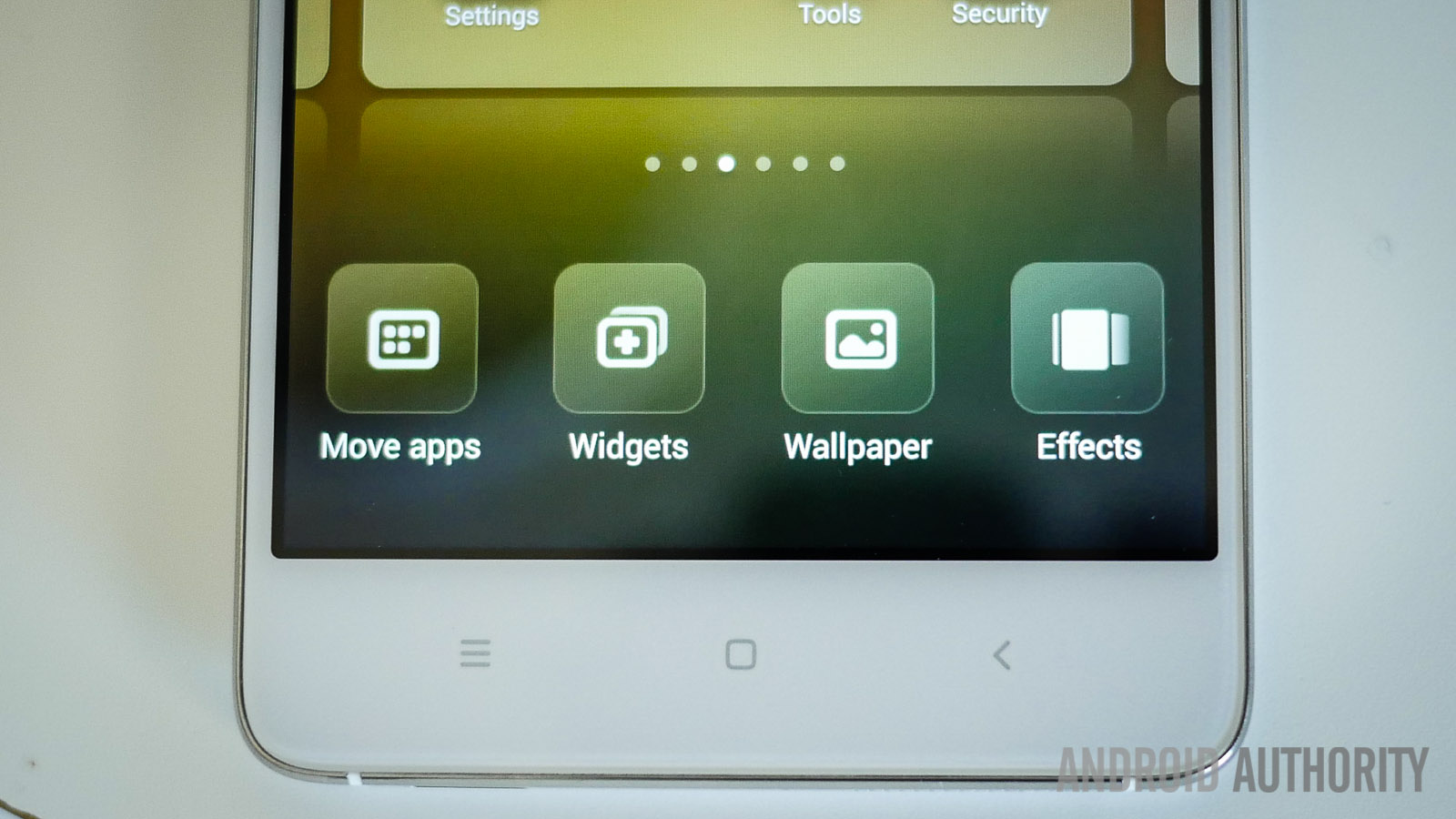
Handling the Xiaomi Mi 4, you definitely get the feeling that it’s a sturdy device, and while the look may be somewhat unoriginal, that doesn’t mean that it doesn’t look good.

The Mi 4 features a 5-inch 1080p display, resulting in a pixel density of 441 ppi, numbers we’d certainly expect from any device that is hoping to compete with current flagships. Colors are quite vibrant, and the contrast allows for some deep blacks, making media consumption and even gaming every bit as good as they should be. Viewing angles are great too, with the image losing fidelity only at extremely sharp angles.
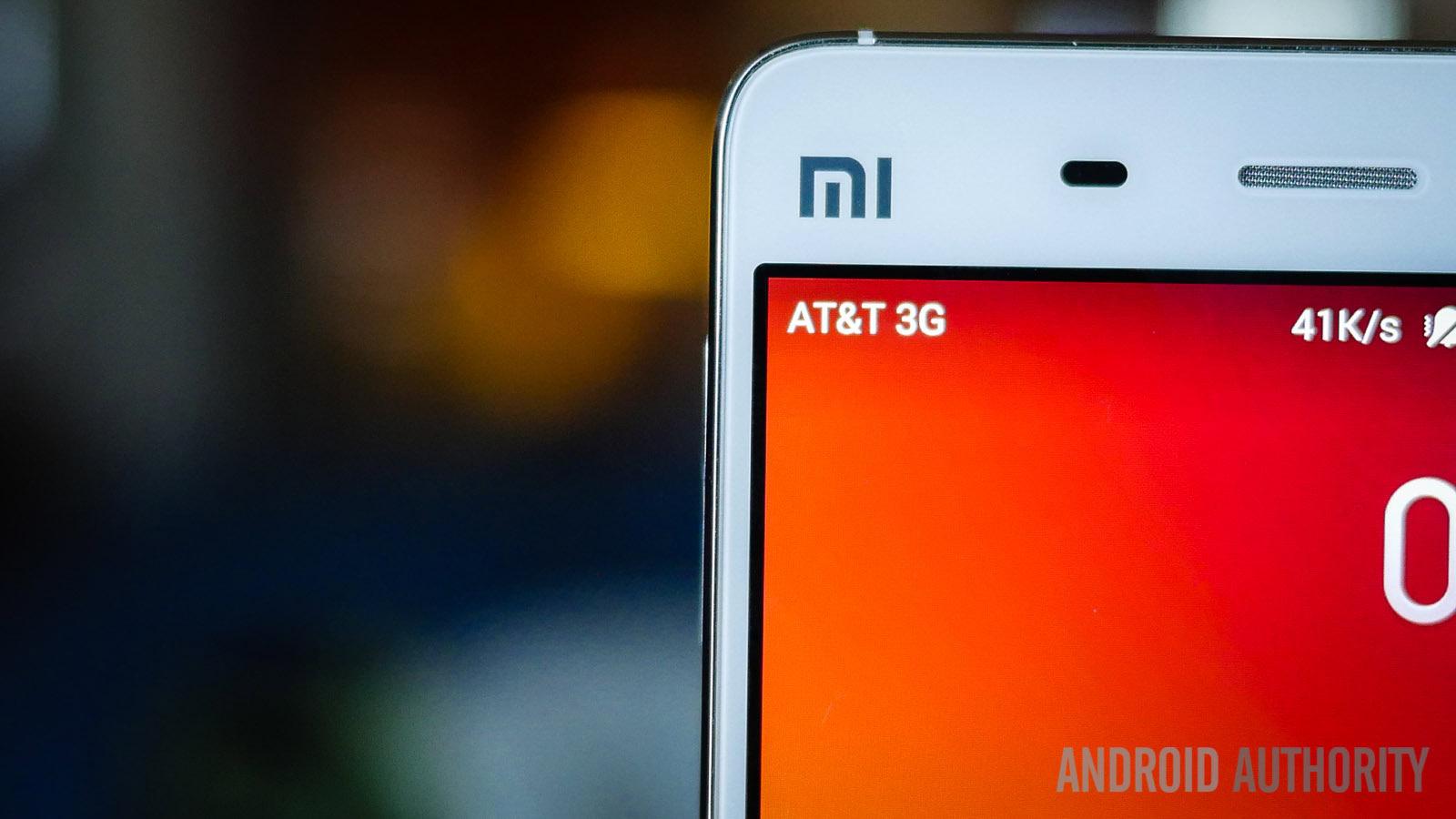
If you look closely around the screen though, you’ll see a small black line framing the image, which adds to the overall bezel size. It’s not a big deal by any means, and is not as big an offender as we’ve seen on some other displays, but is still something worth making a note of.
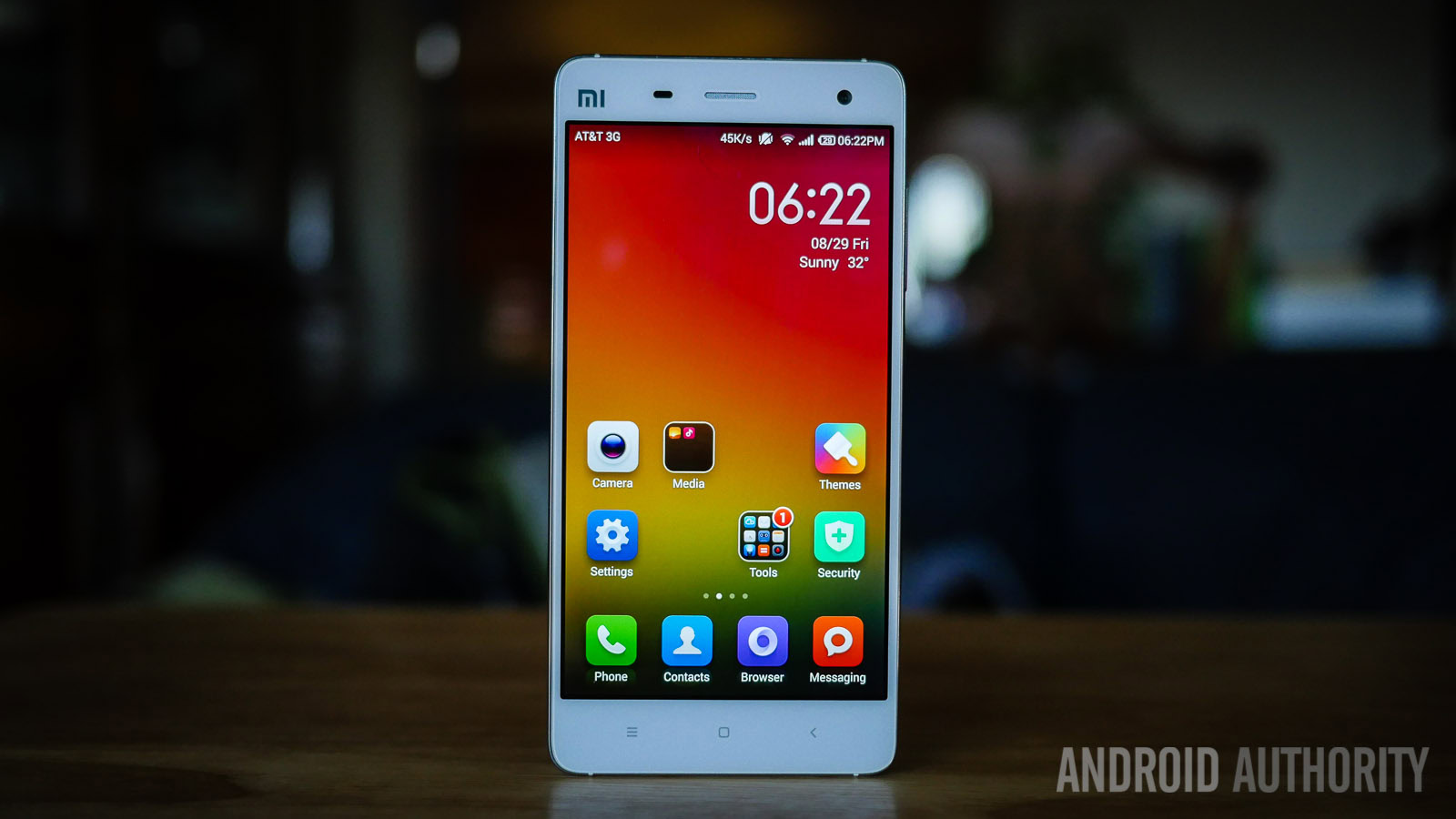
Under the hood, you’ll find the quad-core Qualcomm Snapdragon 801 processor, clocked at 2.5 GHz, and backed by the Adreno 330 GPU and 3 GB of RAM. The processing package is par for the course when it comes to flagship devices, and offers the kind of power you’ll need to do everything, from work to play, easily.
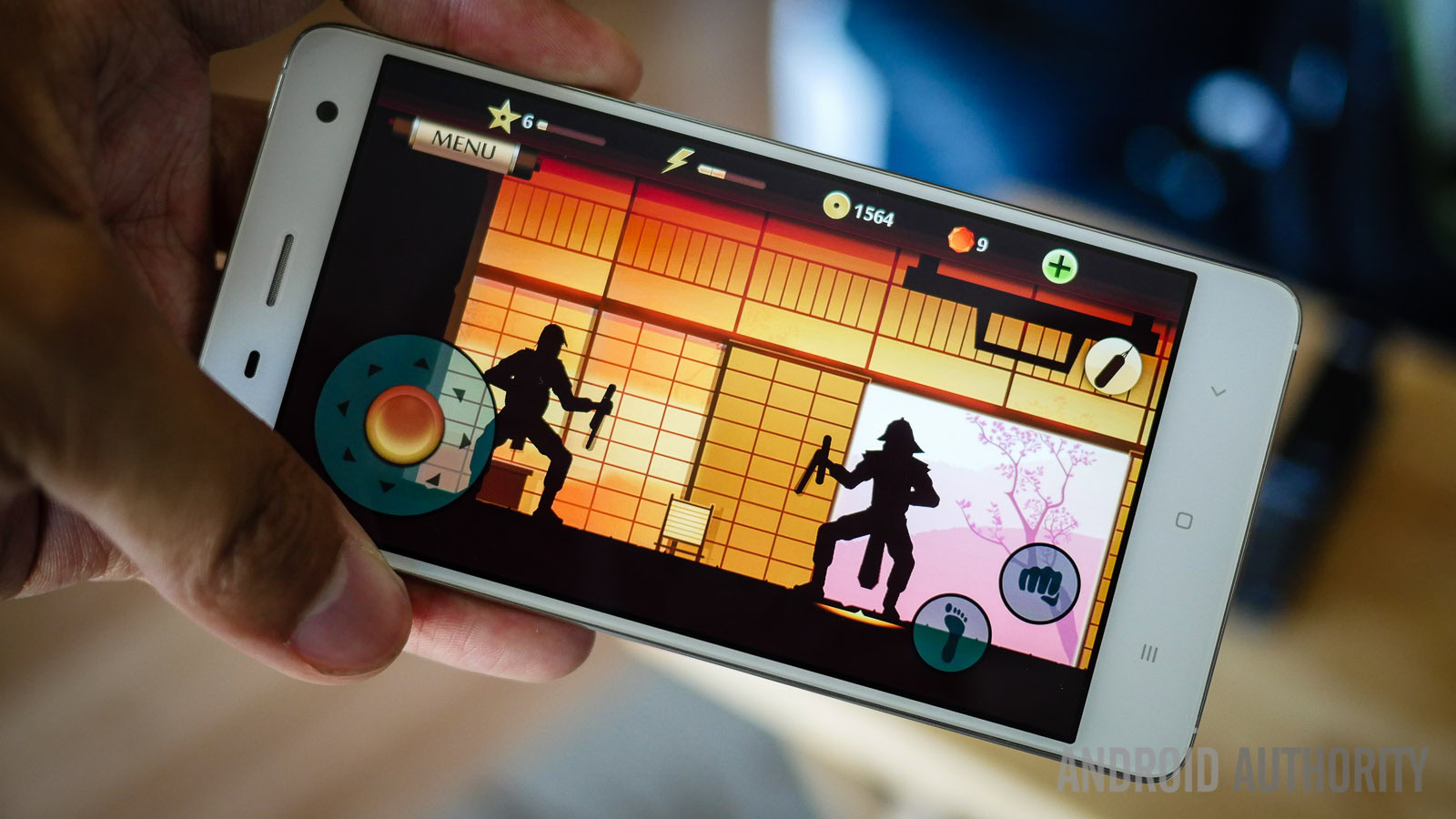
Playing games in particular was a lot of fun on this phone, and I noticed little to no slowdowns in even highly processor-intensive games. One game I got sucked into, Shadow Fight 2, not only showcased the gaming prowess of the device, but also showed off the contrast possible on this display.
One issue I have to mention is that the upper half of the device did get noticeably warm. While the heat did not affect performance in any way, it did make for a slightly uncomfortable handling experience while gaming.
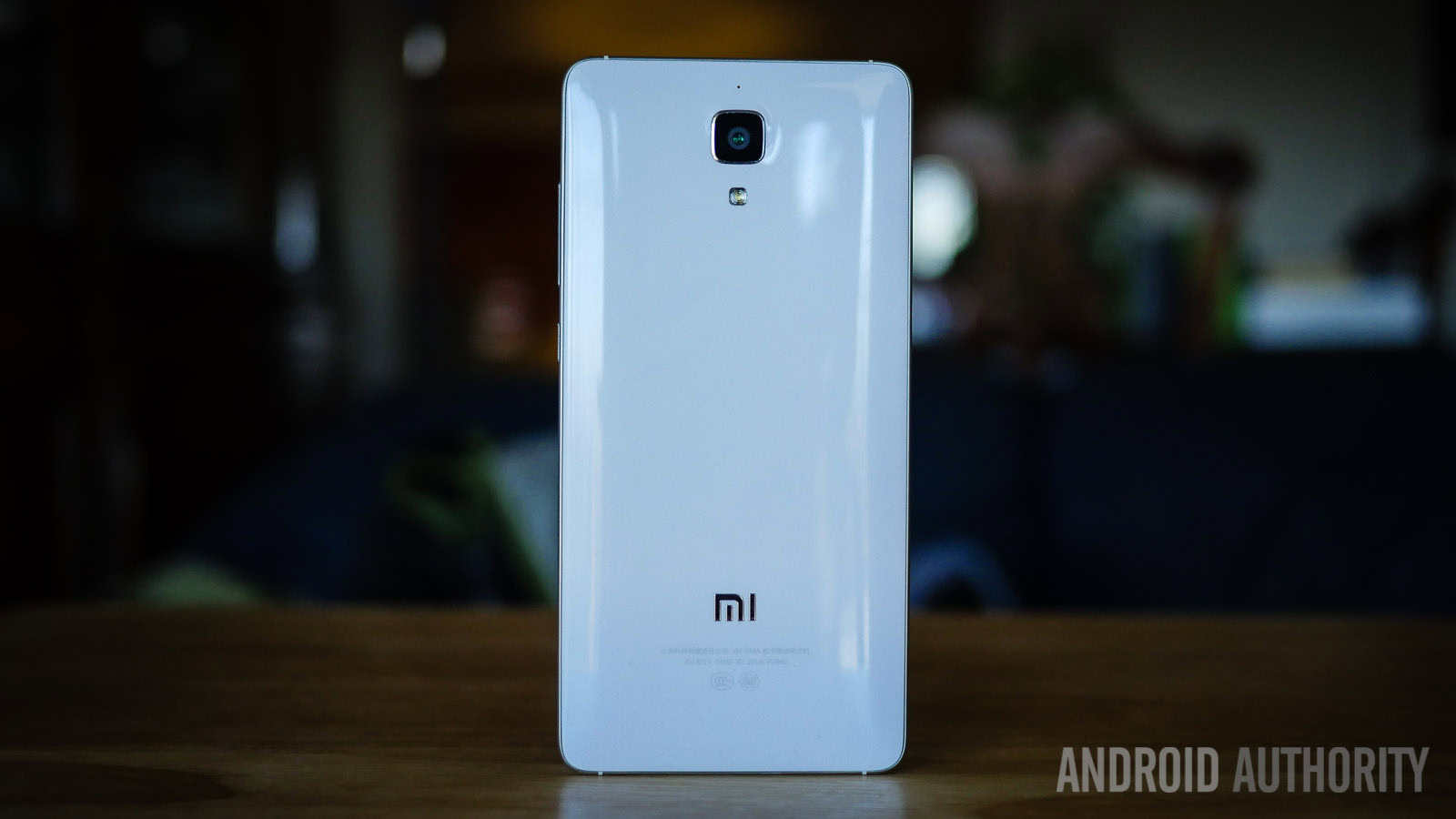
When it comes to hardware, we start to see the issues with using a Chinese market smartphone outside its home country. For starters, this version of the Mi 4 connects only to HSDPA networks, making the internet experience less than ideal for US audiences. This is something I’ve faced with other smartphones in the past, but in the case of the Mi 4, I’ve unfortunately had a lot of connection issues, and have been unable to use mobile networks consistently. That said, a version that is 4G-capable and able to connect to Western mobile networks is coming soon, which is great. When I did find some connectivity, phone calls came in loud and clear.
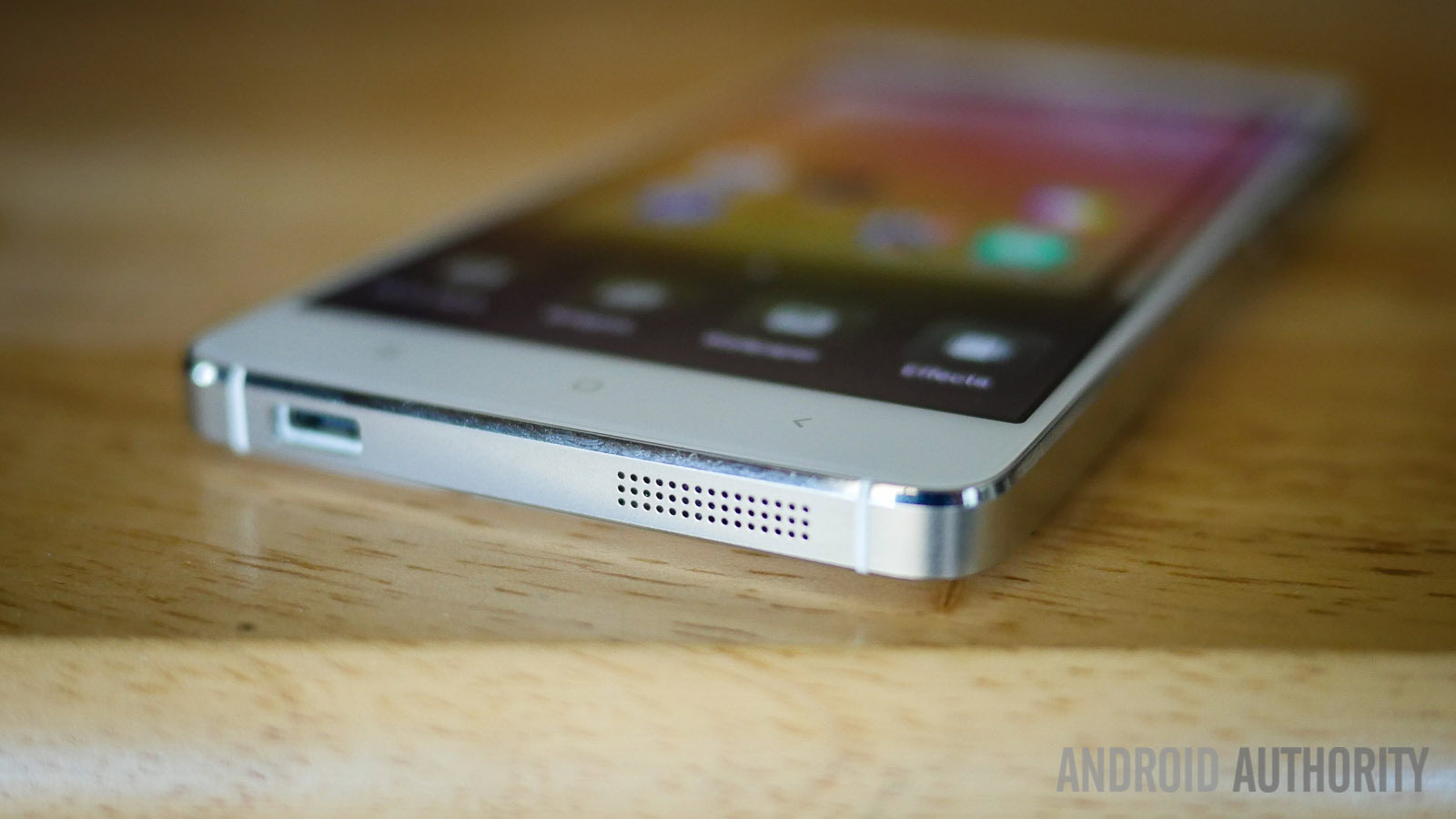
The external speaker at the bottom of the device is also capable performer. When listening to music or playing high-calibre games, sound is quite loud and rich, and I didn’t feel the need to reach for my headphones all the time. If you do like to use the external speaker for media consumption, you won’t have much to complain about. When it comes to storage, 16 GB and 64 GB variants of the Mi 4 are available, but there is no microSD support.
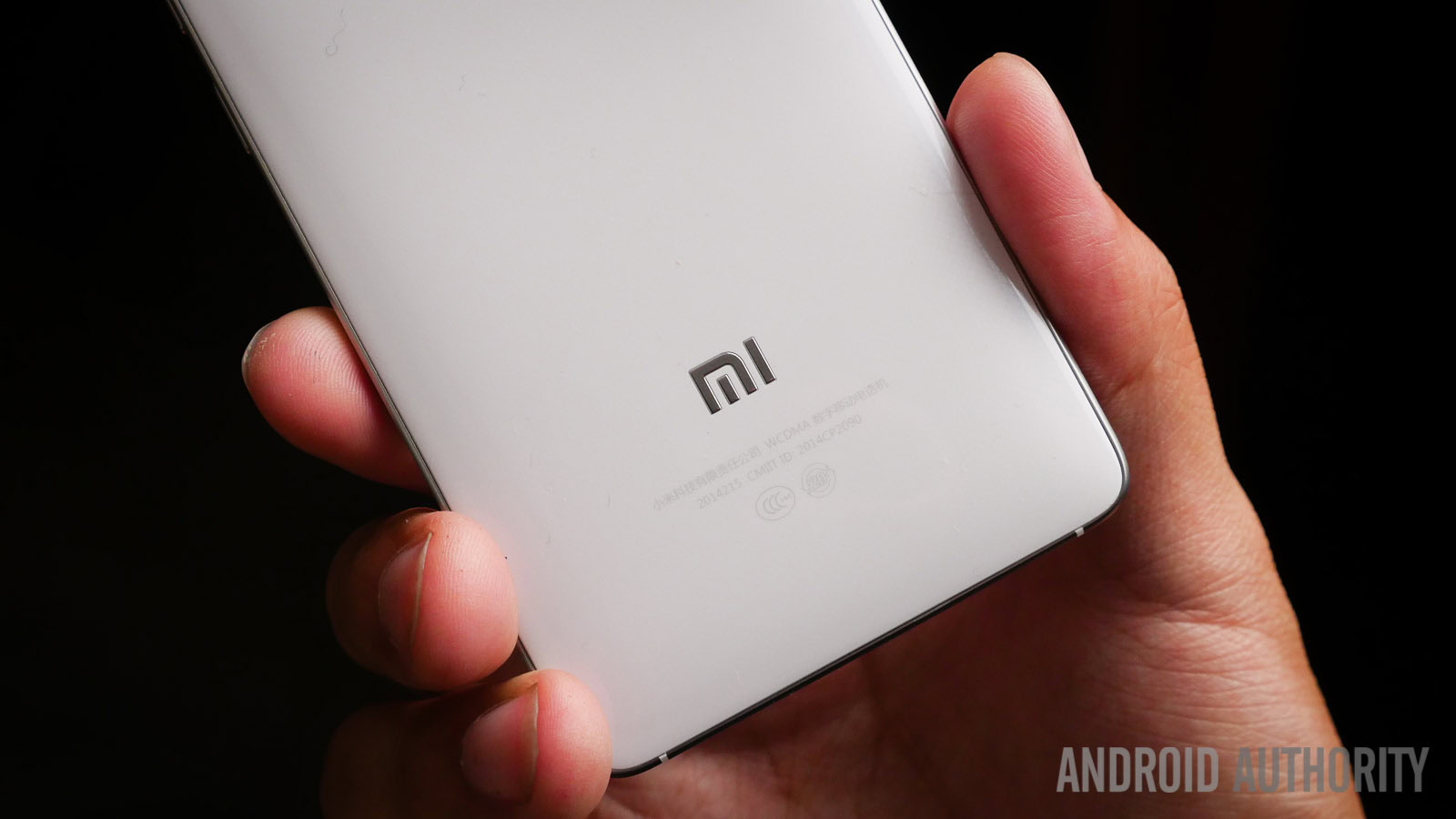
The issue of poor network connectivity unfortunately made it difficult to have any conclusive battery testing, so instead I’ll talk about my day to day experience with regards to battery life. Standby time seems to be really great, and letting the phone sit idle for almost an entire day didn’t dent battery life. I did do one specific test using a looped season of a TV series at half brightness and volume, and while the phone died before I could get a screenshot of the battery usage, it definitely took at least 8 hours to reach single digits.
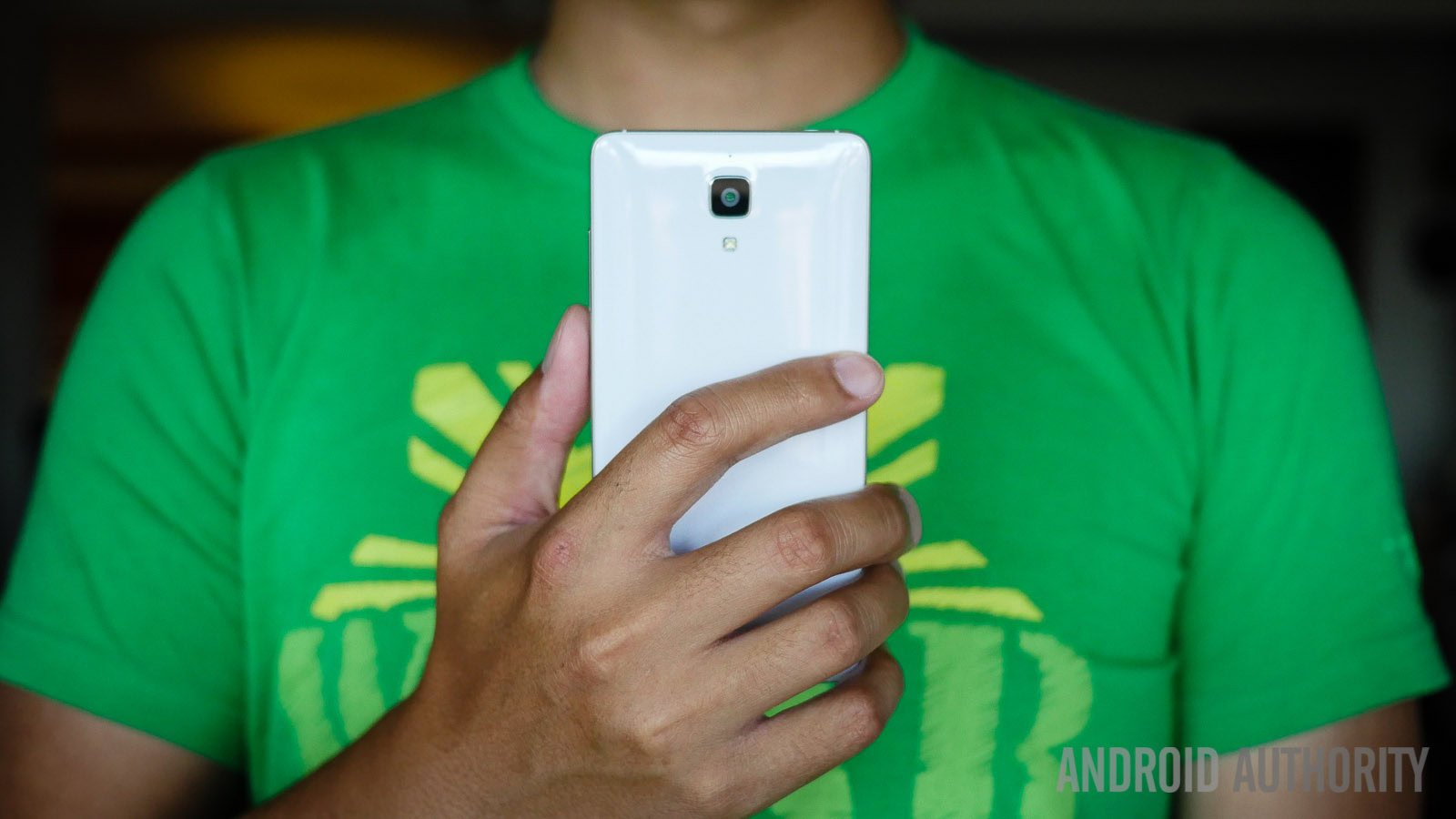
The Xiaomi Mi 4 comes with a 13 MP rear facing camera, and an impressive 8 MP front-facing unit, with the latter being above and beyond anything we’ve seen from popular flagship smartphones.
The software interface is pretty simplistic, and can be changed from a basic to an advanced mode. The advanced mode does add some settings, but switching to it mostly removes the icon labels. Ultimately, functionality is on par with other high-end smartphones, and includes a panorama mode and even a selective focus mode if you want to play with the depth of field.
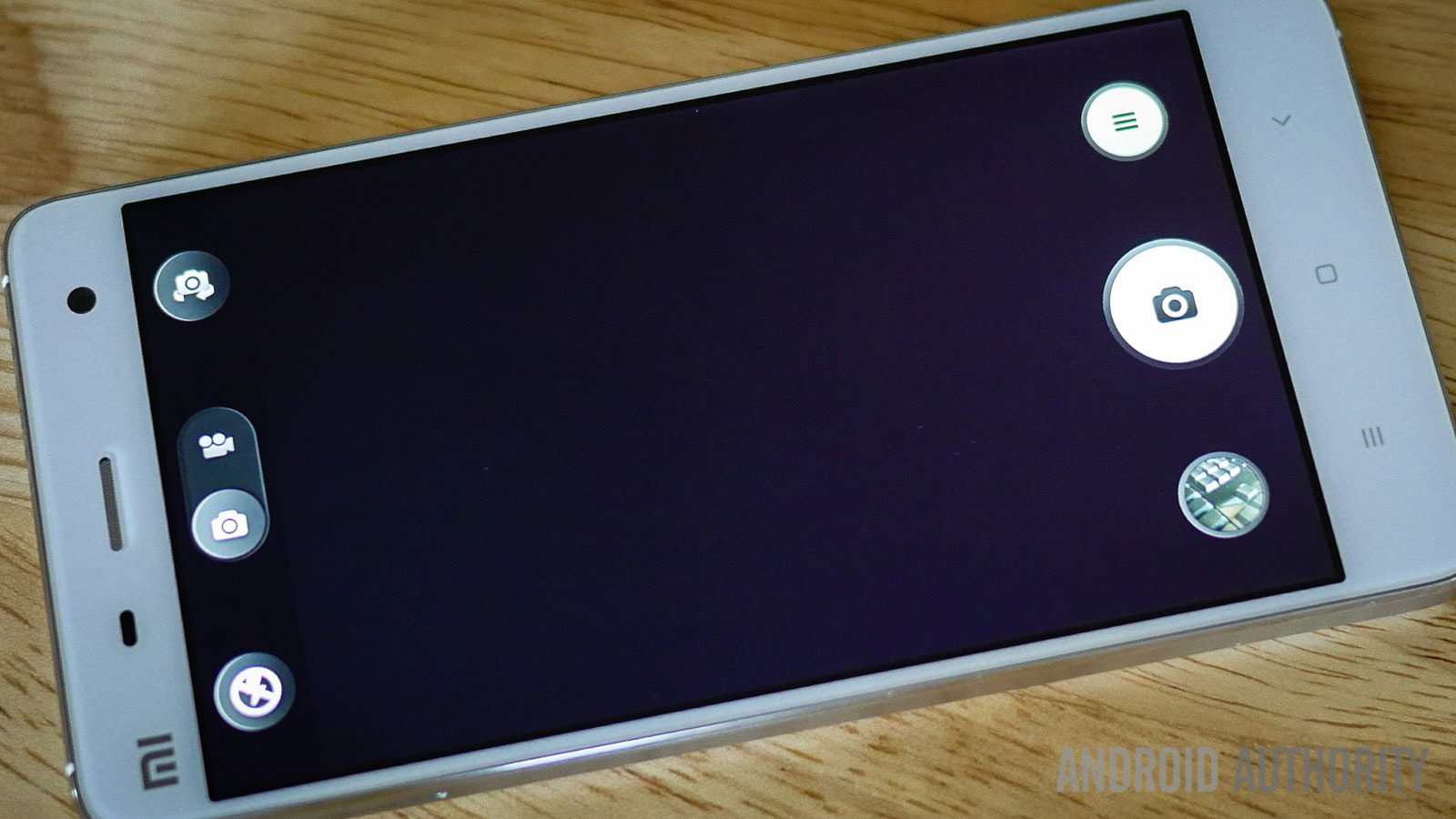
Camera quality is about as standard as you’d expect. In broad daylight, the camera captures detail well, though it might produce the occasional photo that is too bright. The quality starts to taper off once indoors, with grain appearing and getting exponentially worse as the conditions get less than ideal. Colour also loses fidelity in darker situations.
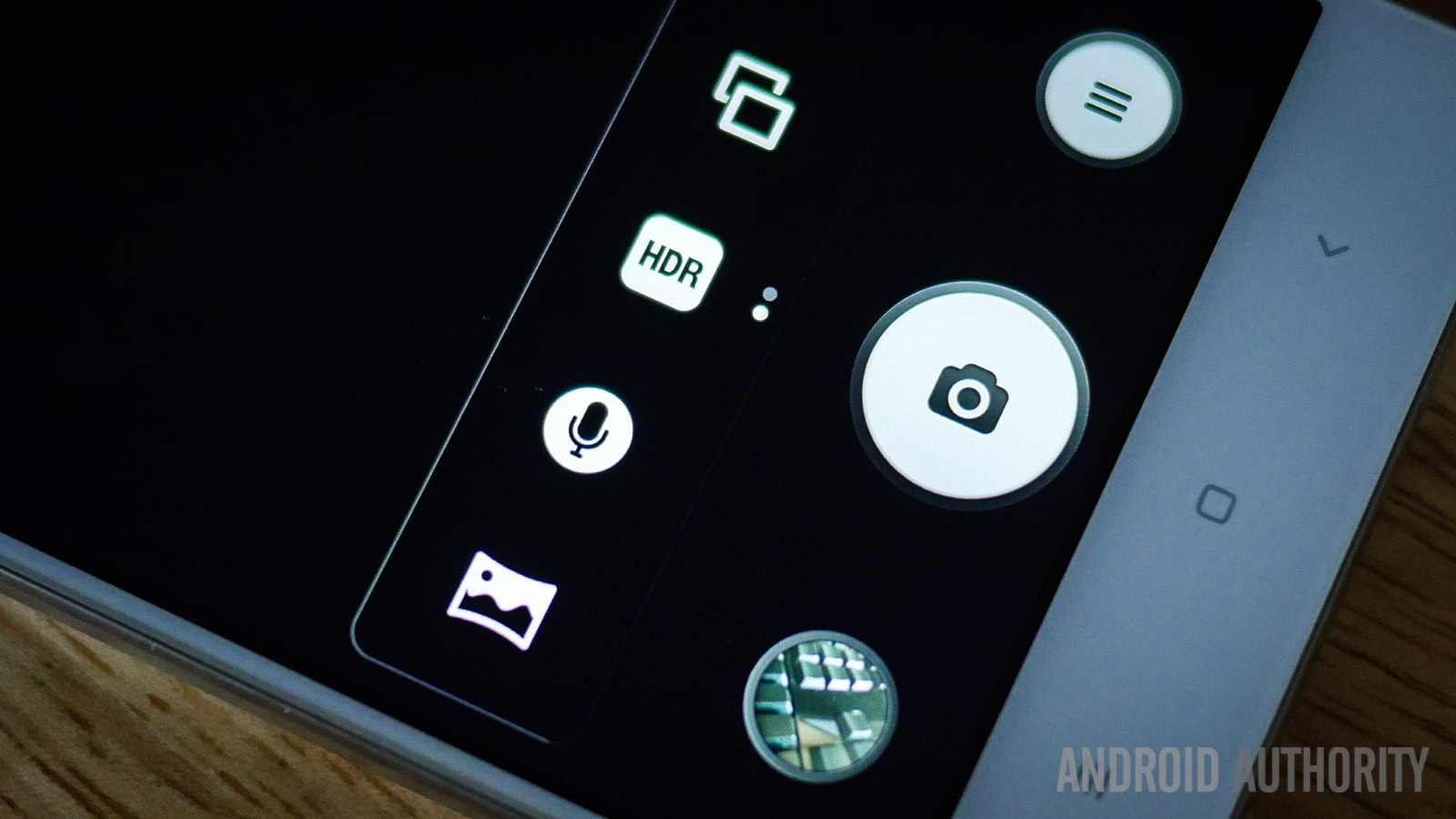
The 8 MP front-facing camera does produce some nice large photos, but its colour reproduction leaves quite a bit to be desired. Selfie lovers might love the higher megapixel count, but it doesn’t bring anything extraordinary to the table.
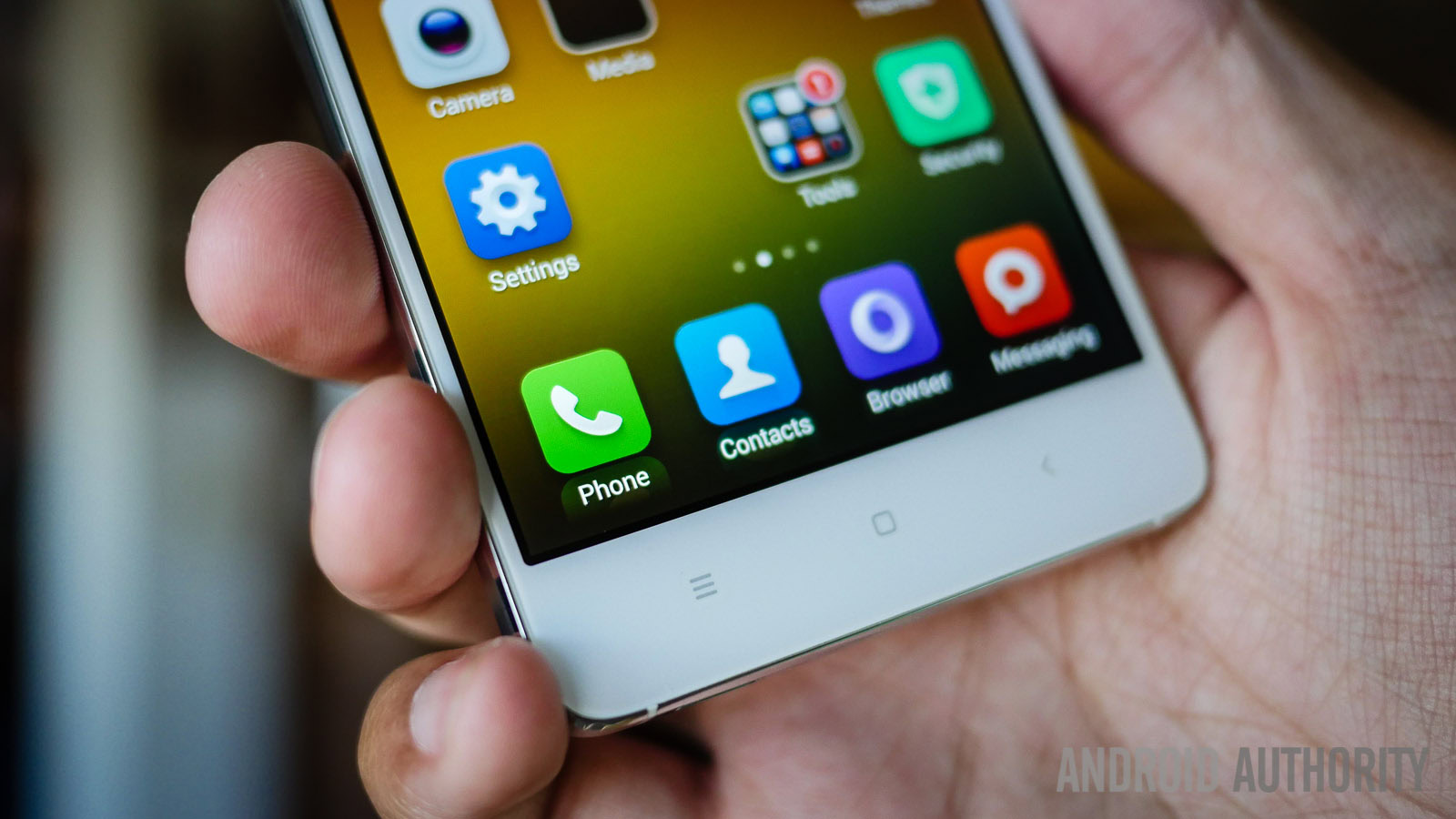
The real difference between the Mi 4 and any other flagship device comes to the fore in the software department. While it’s based on Android 4.4 Kitkat, much of what you’d expect from an Android-based OS is turned on its head on the Mi 4’s MIUI software.
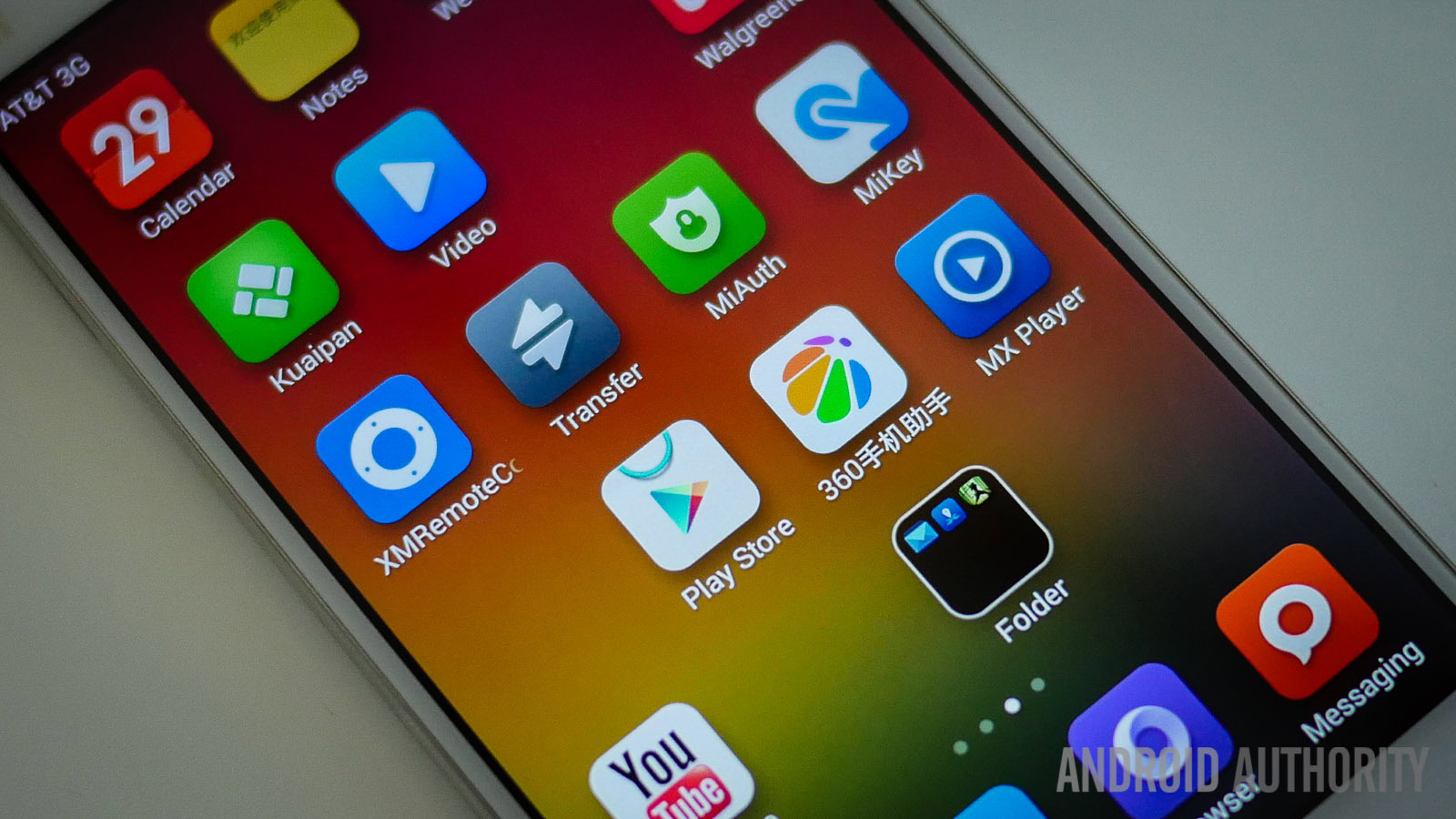
The biggest departure from the norm is the lack of an app drawer. Bubbly icons sprawl across all the homescreens, and the only way to organize them is to use folders. Keeping a clean interface is possible, but if you download a lot of apps, it will take some effort to keep things clean and organized. That aside, menus take on the same simplistic but attractive style, and just about everything moves about in some interesting transitions.
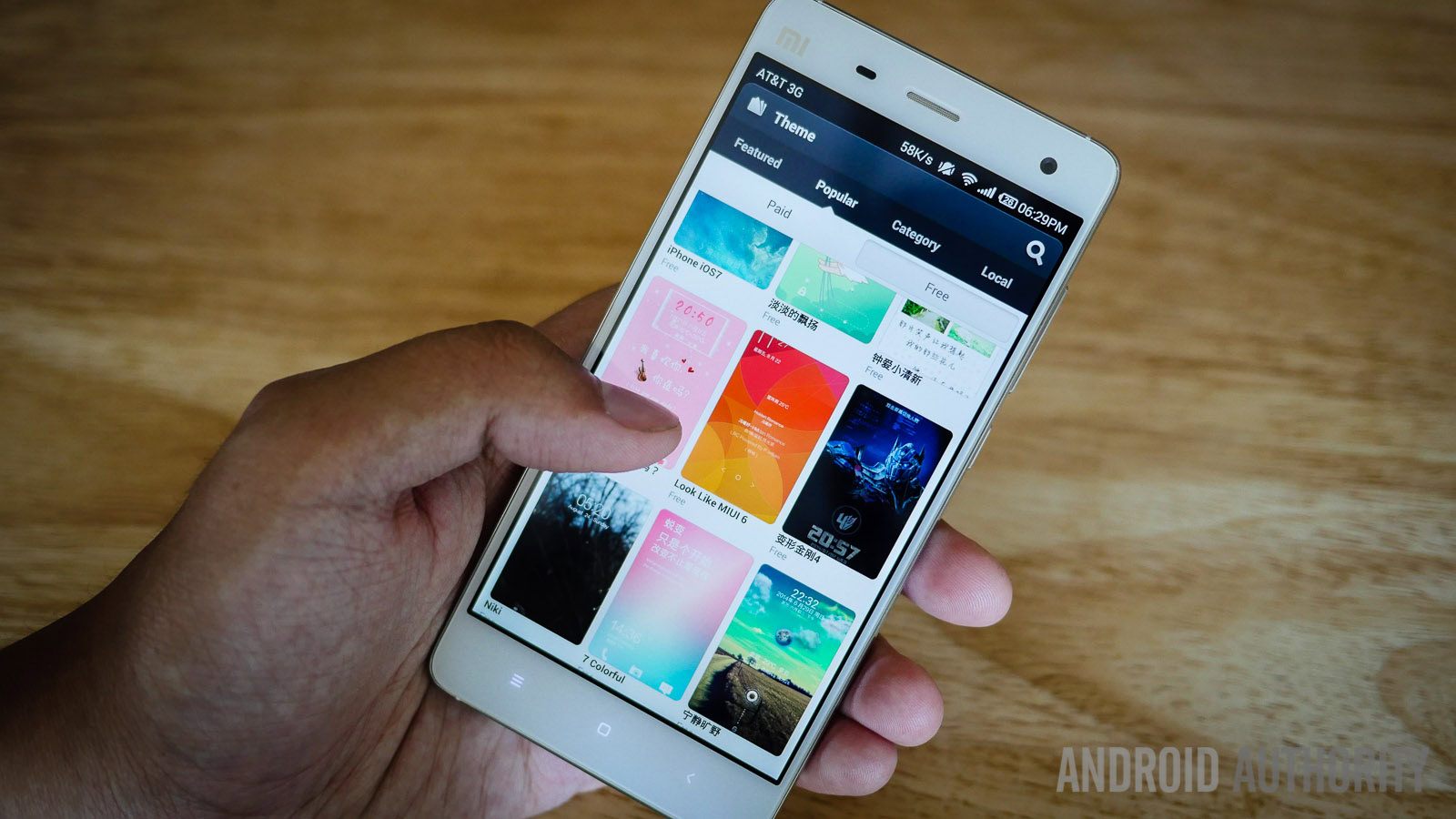
Diving in deeper is where you’ll find quite a lot of customization, which makes MIUI a hybrid of sorts, where you’ll find the rigidity of iOS style homescreens, combined with Android’s customization prowess in any other aspect. A powerful theming engine offers a slew of themes and options to personalize your device.
The notification dropdown can also be customized by a good amount, with the option to sort icons in rows or grids, and even to show certain additional information, such as your current bandwidth speed. Long press functionality can also be programmed for the capacitive keys.
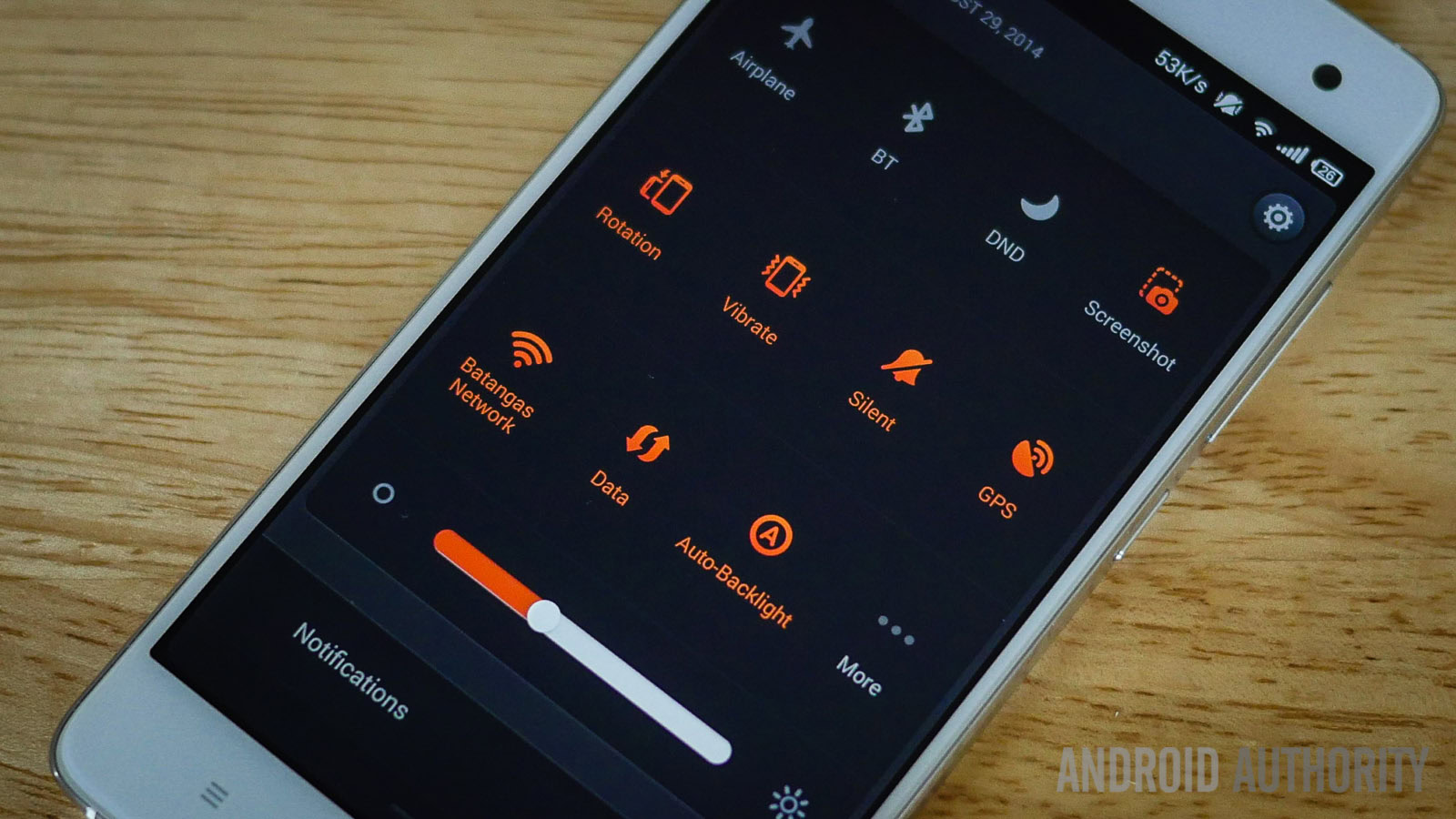
Google Play Services are not available with the Chinese version of the Mi 4, but it’s not hard to install it yourself, and luckily, the Play Store was pre-installed on my unit out of the box. It’s nice to have to ability to install your own apps, but I did see the Play Store crash quite frequently. Xiaomi’s own apps are still in Chinese here, making them impossible to use for anyone who can’t read the language.
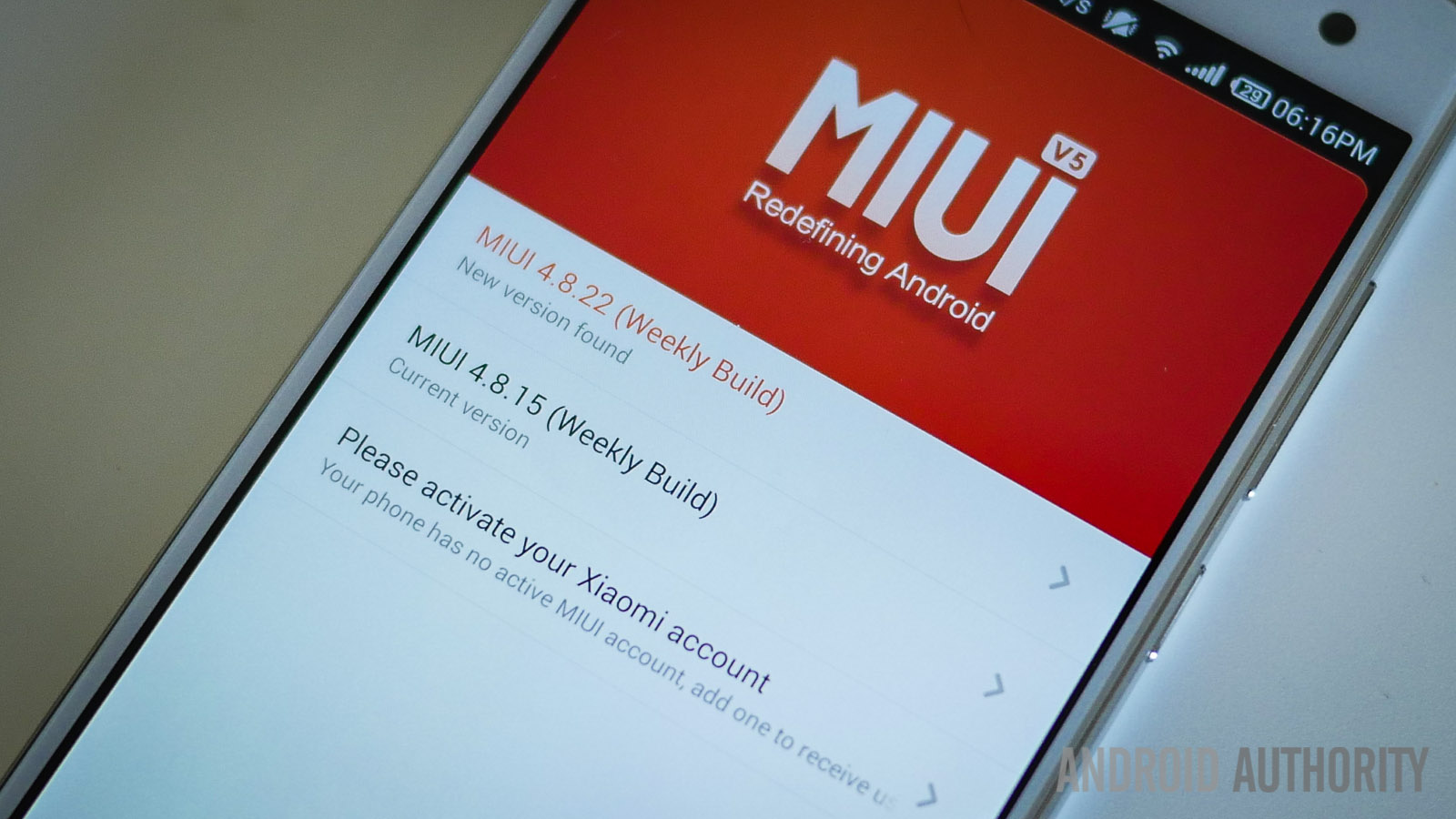
At the very least, you can say that MIUI is continually improving, with updates available on a weekly basis. Ultimately, it’s a very attractive operating system that takes a different approach to Android, and shouldn’t be discounted just because it doesn’t have an app drawer.
| Display | 5-inch IPS LCD, 1920 x 1080 resolution, 441 ppi |
|---|---|
Processor | 2.5 GHz, quad-core Qualcomm Snapdragon 801, Adreno 330 |
RAM | 3 GB |
Storage | 16/64 GB, not expandable |
Camera | 13 MP rear camera, 8 MP front camera |
Connectivity | Wi-Fi 802.11 a/b/g/n/ac, dual-band, Wi-Fi Direct, Bluetooth 4.0, IR Blaster |
Battery | 3,080 mAh |
OS | MIUI OS based on Android 4.4.3 Kitkat |
Dimensions | 139.2 x 68.5 x 8.9 mm, 149 grams |
The Mi 4 isn’t widely available just yet, but if you do want this phone right now, the currency exchange will make it about $350. That is definitely a great price for a device that has a lot to offer, which is the best way to describe this Xiaomi Mi 4. Of course, you’ll have to make sure first that the device works on your mobile network!
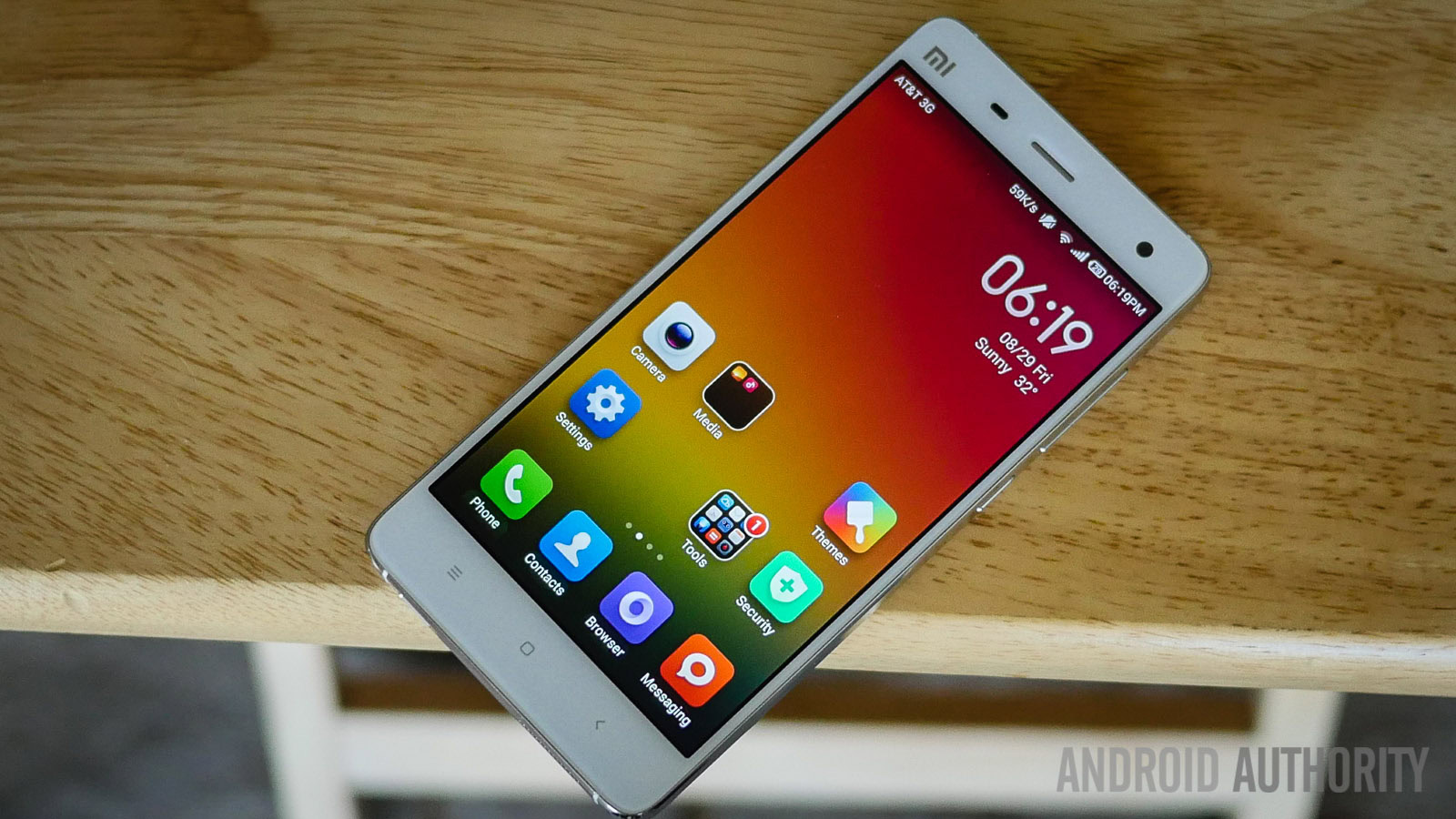
So there you have it, our Xiaomi Mi 4 review! In the end, this smartphones is another good example of how the Chinese mobile industry is trying to show the world what is capable of. And, in this regard, the Xiaomi Mi 4 is a proof of success. You get a package that is easy on the eyes, and easy to use, thanks to the somewhat controversial take on Android called MIUI.
We’re seeing a new batch of metal-clad smartphones in the Asian market, and it seems that they’re all coming to the US, one way or another. In the case of the Xiaomi Mi 4, we’re off to a good start.